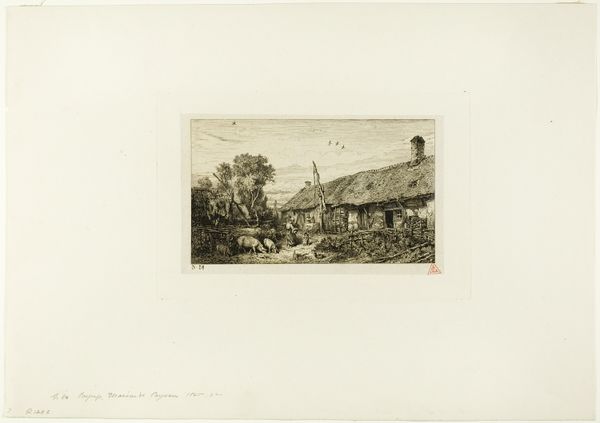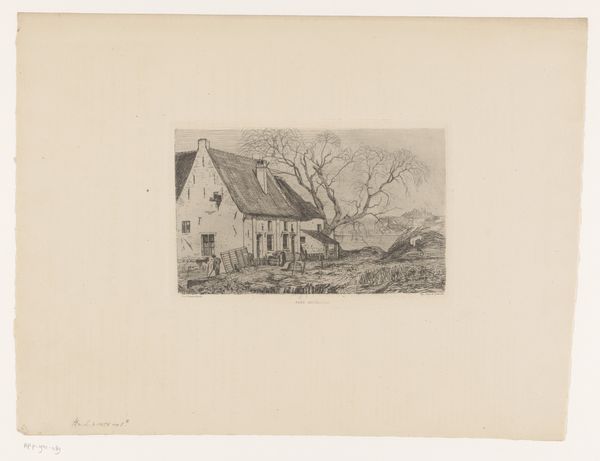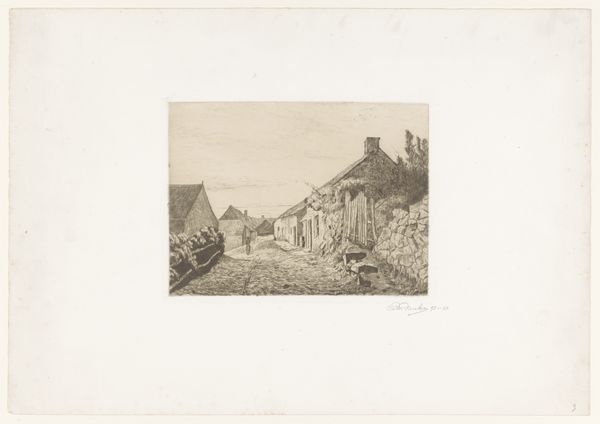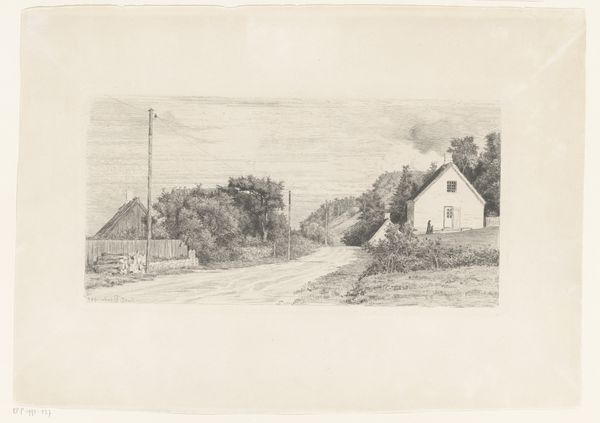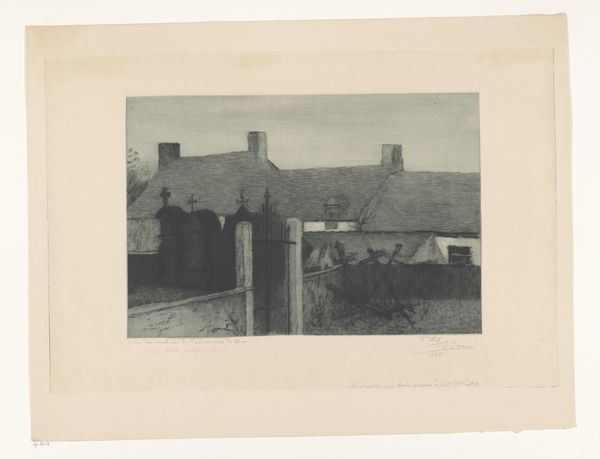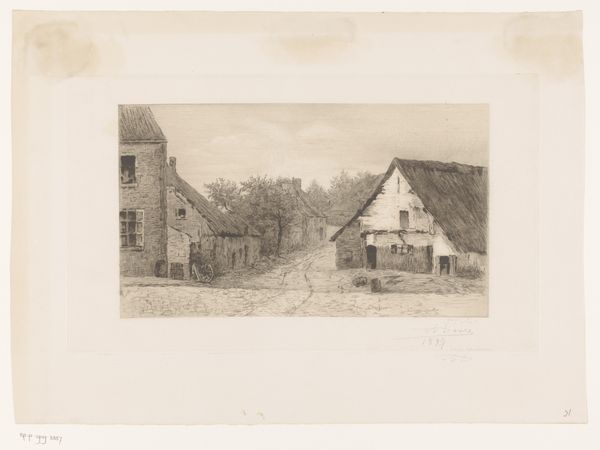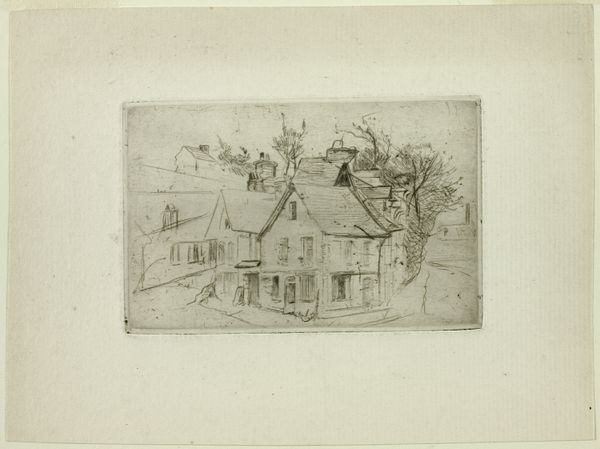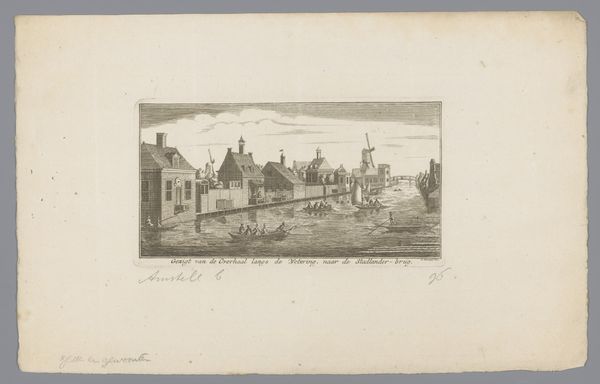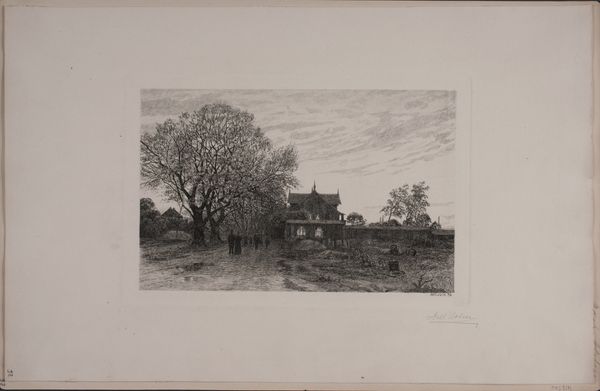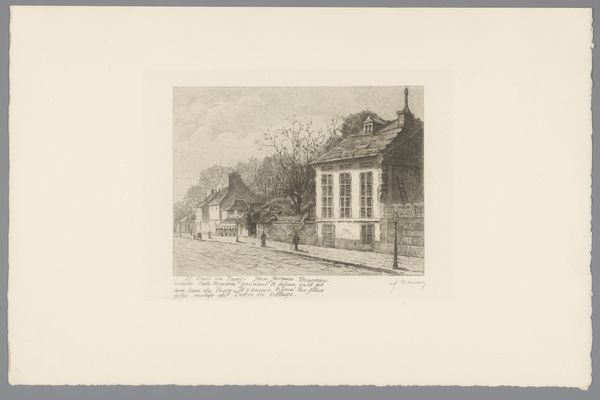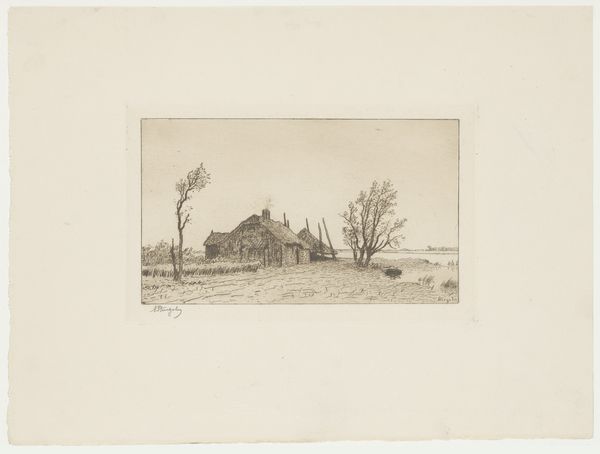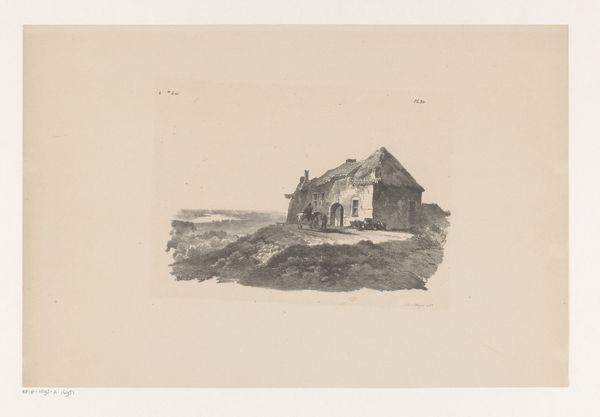
Houses Along the Canal, from Cahier de six eaux-fortes, vues de Hollande 1862
0:00
0:00
drawing, print, etching, paper
#
drawing
# print
#
etching
#
landscape
#
paper
#
cityscape
Dimensions: 170 × 210 mm (image); 178 × 216 mm (plate); 355 × 520 mm (sheet)
Copyright: Public Domain
Editor: This etching, "Houses Along the Canal," by Johan Barthold Jongkind, dated 1862, strikes me as incredibly serene. The simple lines describing the architecture and landscape seem almost meditative. How do you interpret this work from a formal perspective? Curator: The strength of this piece resides precisely in the interplay between the density of the lines forming the architectural elements and the relative openness of the sky and landscape. Note the texture created by the varied hatching, building volume and contrasting with the flat planes, giving depth to what is fundamentally a two-dimensional surface. What do you observe regarding the composition’s balance? Editor: I see that the heavy, dark houses on the left are visually balanced by the lone tree on the right and the implied expanse of the landscape. It prevents the image from feeling lopsided. But the houses almost seem to fade as they recede into the distance... is this intentional? Curator: Indeed. The diminution of detail and the lighter application of the etching as the houses move into the background is a crucial formal device. It simulates atmospheric perspective, creating the illusion of space within the compressed plane of the print. The artist prioritizes optical realism through formal techniques, rather than narrative elements. Does the limited tonal range affect your reading of the image? Editor: Yes, it makes me focus on the shapes and forms themselves, and appreciate how much information can be conveyed with such subtle gradations. The lack of dramatic light enhances that serene quality I mentioned. Curator: Precisely. Jongkind uses formal elements to create a calming scene, showcasing the fundamental structures and textures of the Dutch landscape, distilled through the precise language of etching. The semiotics of line and form effectively remove extraneous emotional narrative, promoting objective observation. Editor: I’ve learned so much just by looking closely at how the lines and forms interact! It’s amazing how much meaning resides in the seemingly simple.
Comments
No comments
Be the first to comment and join the conversation on the ultimate creative platform.
